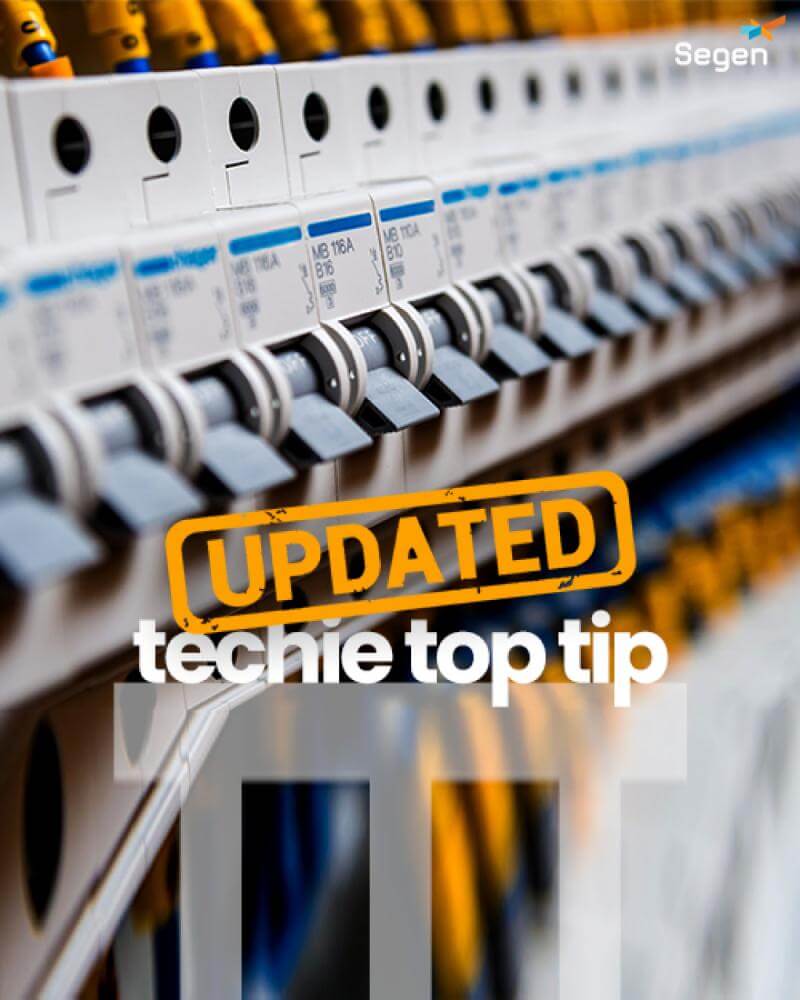
Techie Top Tip – Wiring Regulations Update – Amendment 3:2024.
Aug 1, 2024 | Business
Back in May, we gave you the heads up that the IET was releasing a draft amendment for public consultation (DPC) relating to BS7671:2018. The IET have now released this update today (31st July 2024) and you’ll be pleased to hear that Amendment 3:2024 is free to download from the IET website.
What is the wiring regulation change?
You can download the ‘bolt-on’ and keep your regs up to date by clicking this link.
The new wiring regulation added to the regs 530.3.201 detailing that you need to take consideration of the direction of power flow when choosing which device to install. Where bidirectional power flow is possible then you shall only use a device suitable for bidirectional power flow. Device product standards also require specific marking to indicate if they are unidirectional.
That means, if you look at a device and it has no specific directional markings, then it is assumed to be a bidirectional device. Unidirectional devices will have an indication of the direction such as ‘In & Out’ ; ‘Line & Load’ ; ‘Supply & Load’, or arrows determining the power flow.
Interestingly, the regs do specify the direction of ‘power flow’ and not the direction of current. This is for a very good reason. As we know in an AC system, the current will alternate in its direction, at 50Hz, or 50 times per second. So, the regulation is clear to establish that we’re talking power flow direction here.
Why was the regs change needed and what are the concerns in using a unidirectional device in a bidirectional application?
It was BEAMA who initially alerted the industry to the problem via a technical bulletin. The BEAMA document explains that if a unidirectional device is connected/used incorrectly, then the short-circuit & arc extinguishing characteristics of an MCB can be impaired.
Likewise on a unidirectional RCD, bidirectional power can permanently disable the RCD itself, but without actually visually tripping. So, the user of the system can continue to use it completely oblivious to the fact that their RCD is actually no longer protecting them.
Amendment 3:2024 has also introduced new definitions within Part 2, for Bidirectional Protective Devices and Unidirectional Protective Devices.
Where do we need to consider bidirectional power flow?
This wiring regs update is applicable for systems such as Solar PV, battery storage and EV charging. All that lovely stuff that you buy from your favourite distributor, Segen! You’re going to need to ensure you’re specifying and installing the appropriate protective devices where bidirectional power is a consideration.
EV chargers & bidirectional power flow.
When we talk about bidirectional power flow in EV chargers, we’re essentially talking here about either Vehicle to Grid (V2G) or Vehicle to Home (V2H), or described more generally as Vehicle to X.
It’s worth noting however that for V2X, both the EV and the EV charger need to be capable. Most EVs are not. Most EV chargers are not.
Whilst a typical AC EV charger can convert from AC to DC to charge the car (ie ‘Rectification’), they cannot do it the other way and perform ‘Inversion’ by converting DC to AC.
EV & EV charger technology will develop in time. In the interim, we are eagerly awaiting the Sigenergy EV DC module. It enables DC charging of your EV direct from your PV or battery storage. But, as it’s also a DC charger, it should enable V2X, just as long as your EV itself supports it.
Wiring regulation amendment 3 (2024) is due for immediate implementation.
– By Steve Donovan, Head of Technical UK & Ireland.









